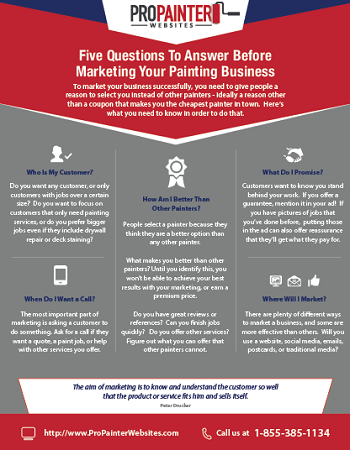Comprehending Seasonal Influences On Commercial Outside Paint: Important Expertise For Success
Comprehending Seasonal Influences On Commercial Outside Paint: Important Expertise For Success
Blog Article
Created By-Aguilar Decker
When you're planning a business external painting task, seasonal aspects can make or break your outcomes. You'll wish to take into consideration just how temperature level and moisture impact paint application and drying times. Picking the best period can ensure your paint adheres effectively and lasts much longer. Yet which straight line painter are truly the most effective for this type of job? Allow's check out the key elements that can influence your job's success.
The Effect of Temperature on Paint Application
When you're planning an industrial outside paint job, the temperature level can dramatically affect just how well the paint adheres and dries out.
Preferably, you intend to repaint when temperature levels range between 50 ° F and 85 ° F. If it's too cold, the paint might not cure properly, resulting in problems like peeling off or fracturing.
On the flip side, if it's too warm, the paint can dry as well promptly, avoiding appropriate attachment and resulting in an uneven surface.
exterior painting edmonton must also consider the time of day; early morning or late afternoon offers cooler temperatures, which can be more favorable.
Constantly examine the maker's recommendations for the specific paint you're using, as they frequently supply assistance on the ideal temperature variety for optimum results.
Moisture and Its Effect on Drying Times
Temperature isn't the only environmental aspect that influences your business outside paint task; moisture plays a significant function too. High humidity degrees can reduce drying out times drastically, impacting the total high quality of your paint job.
When the air is saturated with moisture, the paint takes longer to heal, which can result in issues like poor adhesion and a higher danger of mold growth. If you're repainting on a particularly humid day, be gotten ready for extensive delay times between coats.
It's essential to monitor neighborhood weather conditions and plan accordingly. Preferably, go for moisture degrees between 40% and 70% for optimal drying.
Keeping these factors in mind guarantees your job remains on track and provides a lasting finish.
Best Seasons for Commercial Outside Painting Projects
What's the most effective season for your industrial exterior paint tasks?
Spring and early fall are commonly your best bets. Throughout these seasons, temperature levels are mild, and moisture degrees are frequently lower, developing perfect problems for paint application and drying.
Prevent summer's intense heat, which can create paint to dry as well rapidly, leading to bad adhesion and finish. Likewise, winter's cold temperatures can hinder appropriate drying out and healing, risking the longevity of your paint job.
Aim for days with temperatures in between 50 ° F and 85 ° F for optimum results. Keep in mind to examine the regional weather report for rain, as damp conditions can ruin your job.
Preparation around these variables ensures your paint project runs smoothly and lasts much longer.
Conclusion
To conclude, intending your industrial exterior paint tasks around seasonal considerations can make a significant difference in the end result. By scheduling work during the perfect temperature levels and humidity degrees, you'll make certain much better adhesion and drying out times. Keep in mind to watch on regional weather forecasts and choose the correct time of year-- springtime and early autumn are your best options. Taking these steps will assist you accomplish a resilient and professional surface that lasts.
